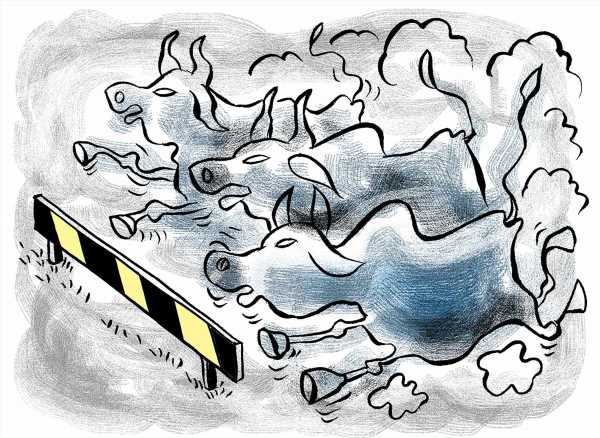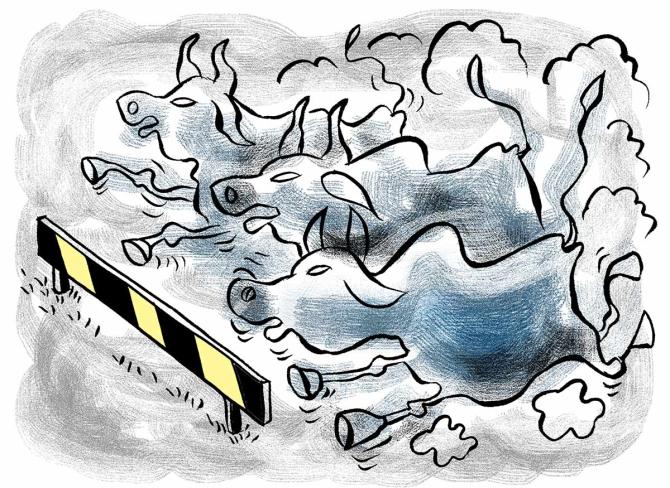Top 5 factors that may set market direction in H2 of 2022
Investors are now looking toward potential triggers that may set the likely trajectory for equity markets in the second half of 2022.
Harshita Singh reports.
As markets complete the first half of the calendar year 2022 (CY22) with a fall of around 9 per cent, the interest-rate hike trajectory by global central banks, paired with the conundrum of inflation and growth, will move the needle for the market, observe experts.
Here’s a quick rundown on what they’ll react to over the next six months.
Interest rates
A key driver that has battered equities this year is the aggravated pace of interest-rate hikes globally, with the Russia-Ukraine offensive setting off record-high inflation levels.
The US Federal Reserve (Fed) hiked rates by 75 basis points — the highest in 28 years — in its latest policy decision and has projected interest rates to rise to 3.4 per cent by the end of this year.
Fed Chair Jerome Powell has reaffirmed the bank’s firmness in taming inflation, even if it comes at the cost of economic downturn.
“With increasing focus on controlling inflation, central banks could get more aggressive in raising interest rates.
“This does not bode well for equity markets,” says Rohit Khatri, fundamental analyst, Religare Broking.
Inflation
While the US has seen retail inflation racing to a 41-year high, the consumer price index back home has remained above the Reserve Bank of India’s upper tolerance band of 6 per cent throughout CY22.
Moreover, the central bank has made it clear that this level will sustain through the first three quarters of 2022-23 (FY23).
“Investors will look at how the growth and inflation environment is developing globally and domestically as it remains volatile and unclear right now,” says Narendra Solanki, head of fundamental research, Anand Rathi Shares & Stock Brokers.
Solanki expects markets to consolidate in the second half (H2) of CY22, with all eyes on macro data like gross domestic product and inflation, which may provide directional moves.
Fears of recession
Equity markets in the US have reflected the steeply rising risks of recession as the Fed remains steadfast in controlling inflation.
Although Solanki believes a recession in the US could have a negative impact on global financial markets, including India, the worst is over.
With inflation likely to peak in H2FY23, the risk-reward metric is currently favourable for Indian markets.
Although a developed market recession will undoubtedly weigh on Asia’s growth outlook, Asia’s downturn will be relatively shallow, say analysts at Morgan Stanley.
Foreign institutional investor (FII) outflows
Foreign investors have pulled out a massive Rs 2.17 trillion so far this year.
However, analysts expect them to return to India as soon as interest rates turn stable and inflation abates.
“From a long-term perspective, the share of FII investments in the primary market is increasing.
“This shows their confidence in India’s long-term growth story.
“Whatever selling we have seen in the secondary markets may be attributed to short-term funds that are susceptible to a high-inflation environment,” says an analyst at a local brokerage.
Corporate earnings
As corporates saw their profits grow at a sluggish pace in the recent quarter, with some sectors like metals and fast-moving consumer goods being the worst hit on margin erasure, the pressure on profitability is expected to continue, with inflation at elevated levels, say analysts.
However, the resilience in top-line growth could remain firm, with margins reversing to healthy levels once things normalise on the cost inflation front.
Source: Read Full Article


